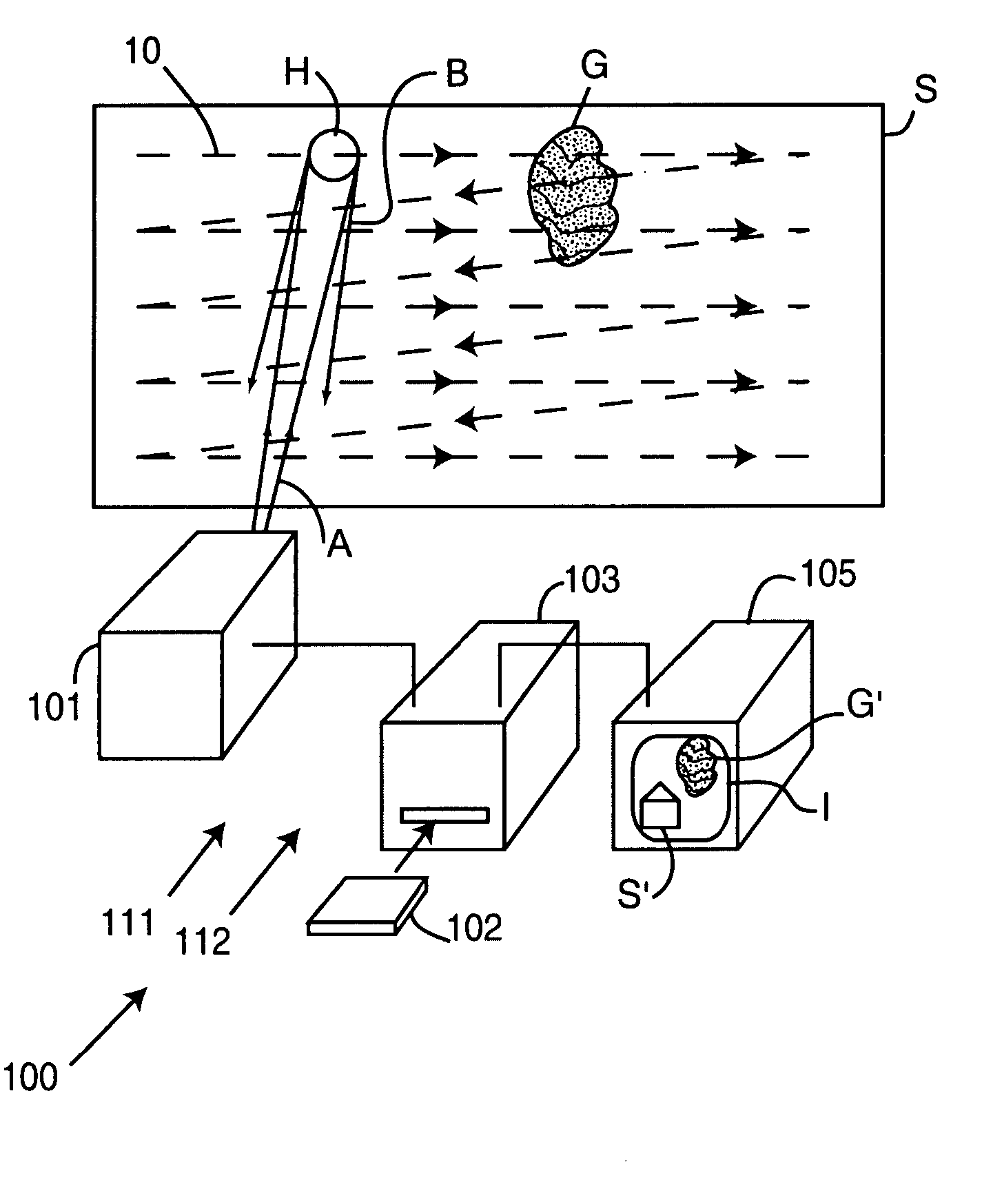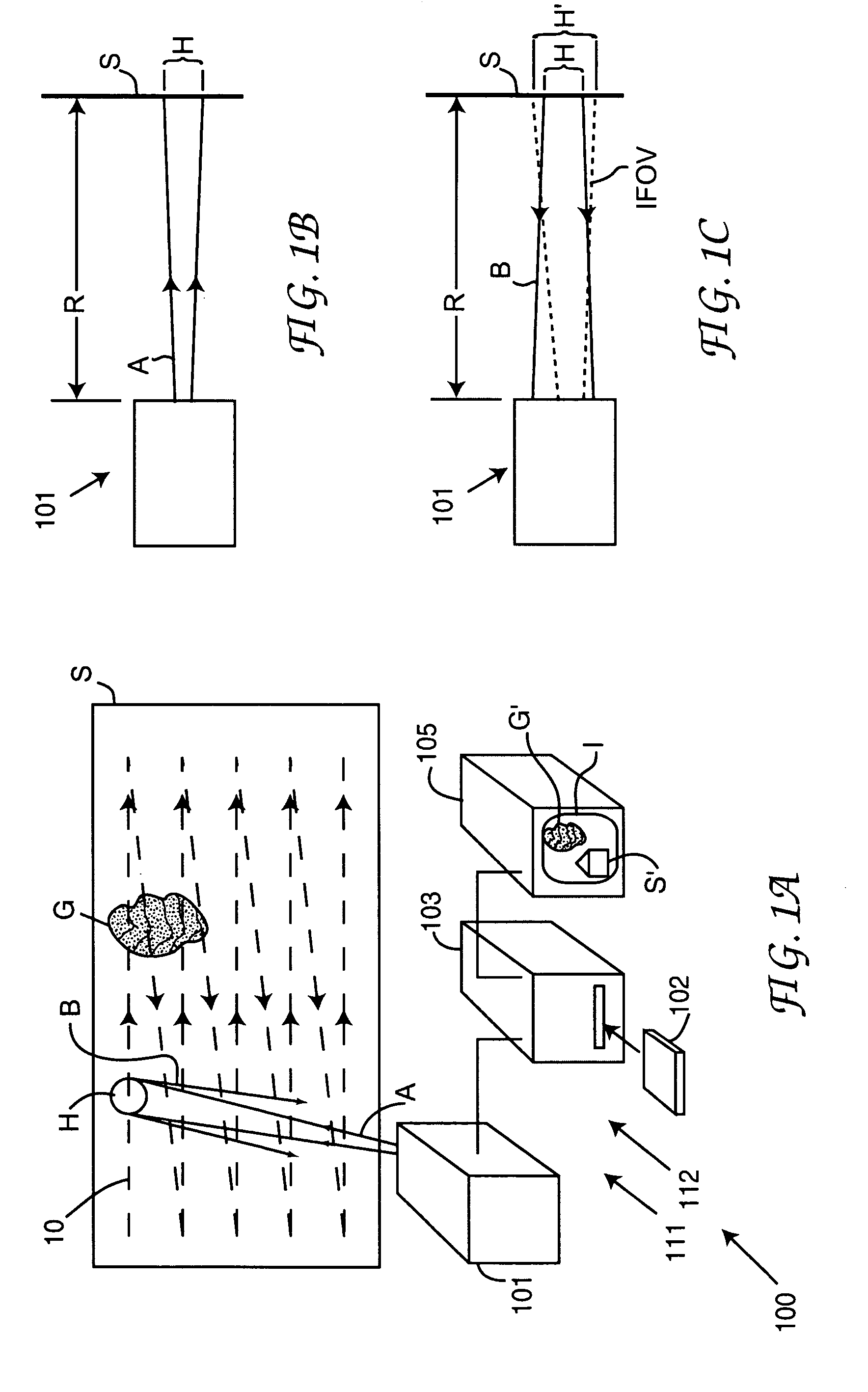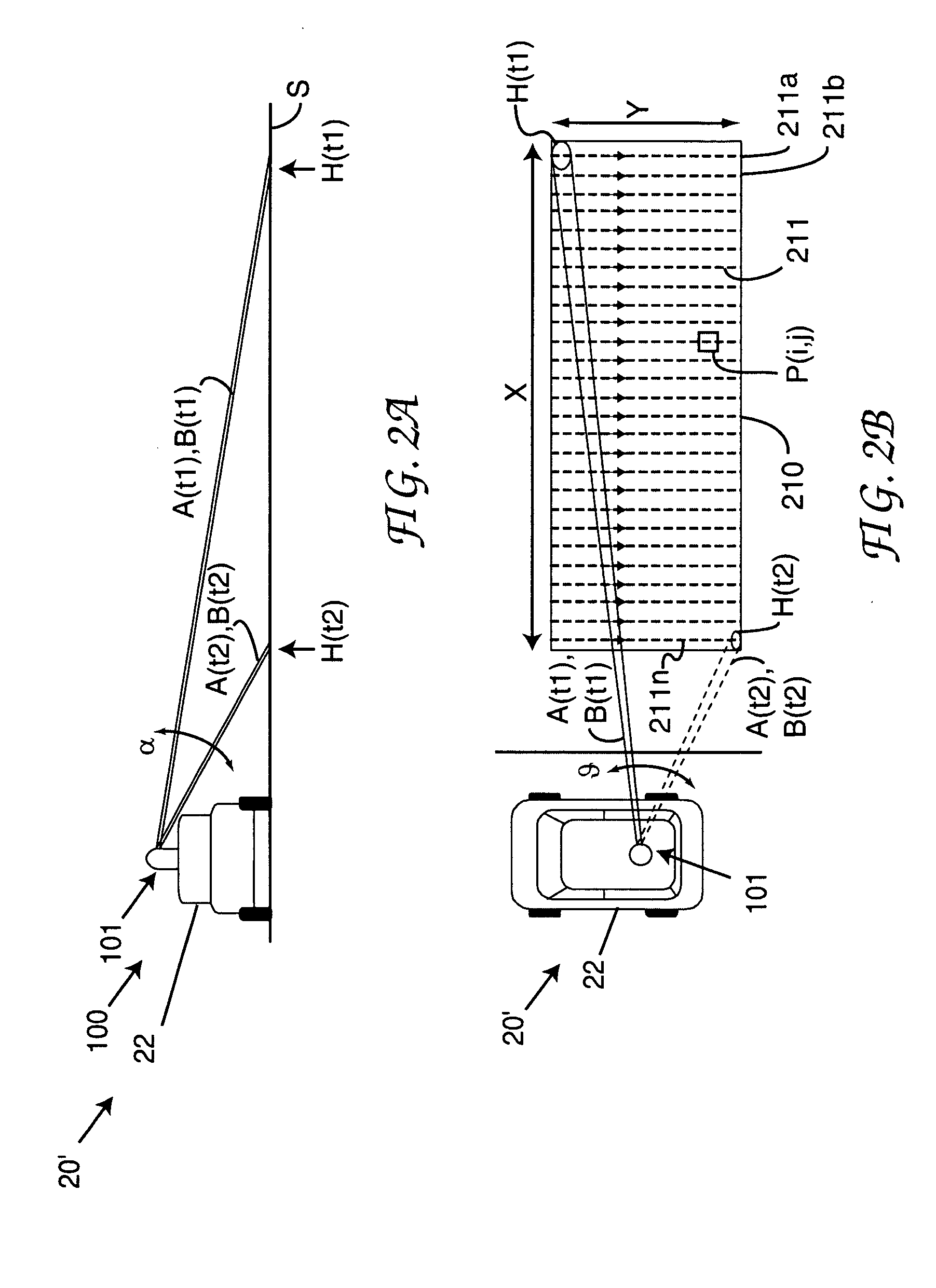Natural gas leak mapper
a natural gas and mapper technology, applied in the field of backscatter absorption gas mapping systems, can solve the problems of malfunctioning industrial equipment, difficult visual determination of the presence and extent of natural gas leakage into the environment, and inability to detect the presence of natural gas leakage,
- Summary
- Abstract
- Description
- Claims
- Application Information
AI Technical Summary
Benefits of technology
Problems solved by technology
Method used
Image
Examples
Embodiment Construction
[0036] The present invention will now be described in terms of systems that measure gases of interest by making spectroscopically differentiated absorption measurements of laser light backscattered from a surface in a scene and through the gas. The measurements are described herein as including the use of lasers. The term “laser” as used herein is intended to include lasers as well as any other light sources with spectral and brightness properties meeting the requirements presented in this teaching. For example such light sources could include a laser followed by a frequency conversion device or an incandescent beam from a gas discharge source. The light source is capable of operating in a single-wavelength or differential mode and is designed to produce high-quality images even when the system experiences moderate movement or vibration (such as might occur when the system is driven in a vehicle). In addition, the light or beam generated by the laser is intended to include light at ...
PUM
| Property | Measurement | Unit |
|---|---|---|
| frequency | aaaaa | aaaaa |
| width | aaaaa | aaaaa |
| frequency | aaaaa | aaaaa |
Abstract
Description
Claims
Application Information
 Login to View More
Login to View More - R&D
- Intellectual Property
- Life Sciences
- Materials
- Tech Scout
- Unparalleled Data Quality
- Higher Quality Content
- 60% Fewer Hallucinations
Browse by: Latest US Patents, China's latest patents, Technical Efficacy Thesaurus, Application Domain, Technology Topic, Popular Technical Reports.
© 2025 PatSnap. All rights reserved.Legal|Privacy policy|Modern Slavery Act Transparency Statement|Sitemap|About US| Contact US: help@patsnap.com



